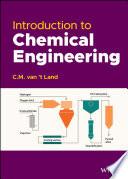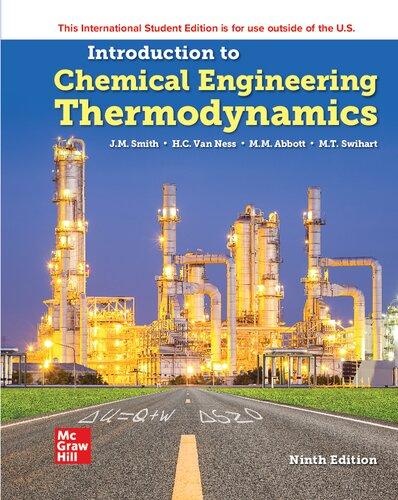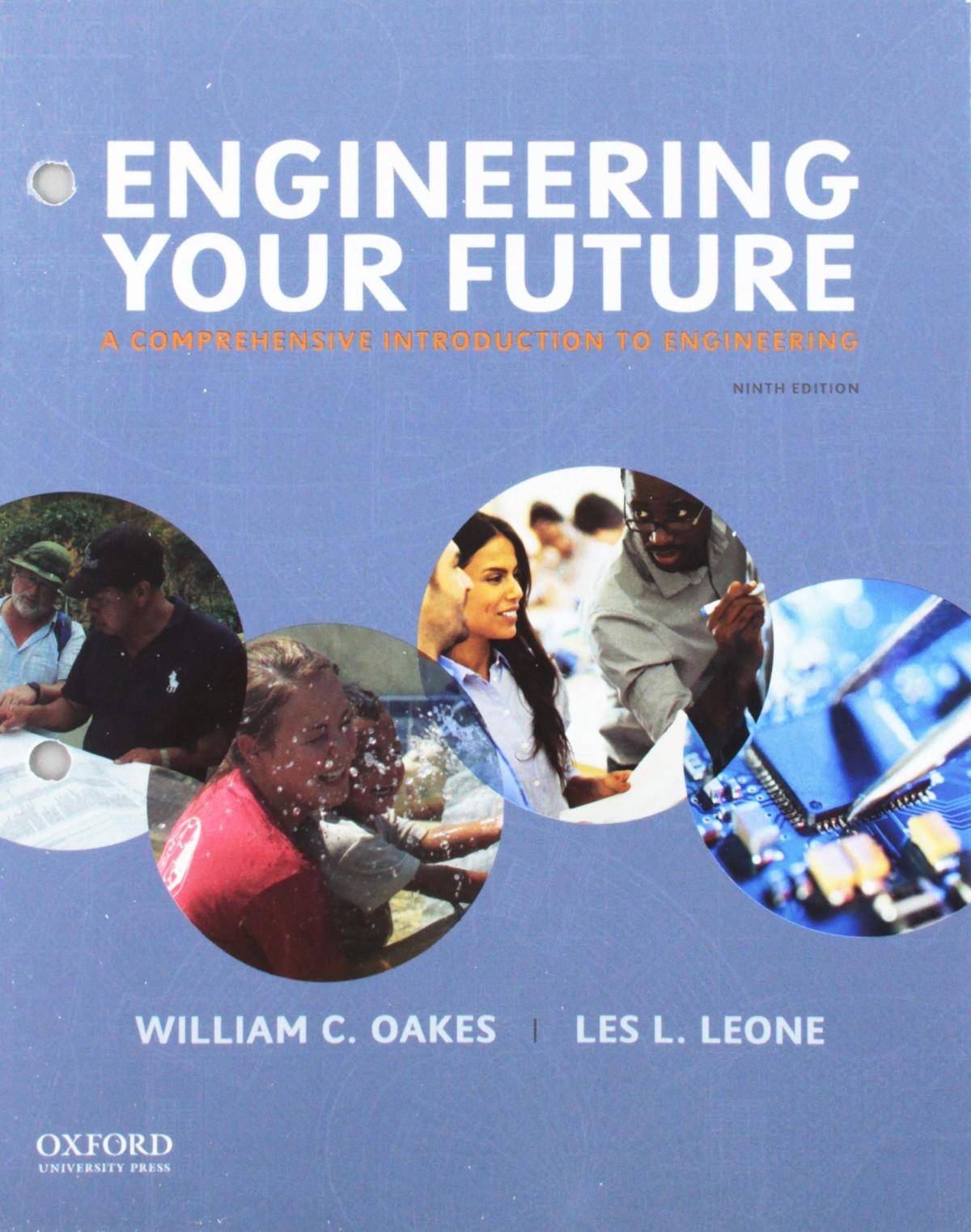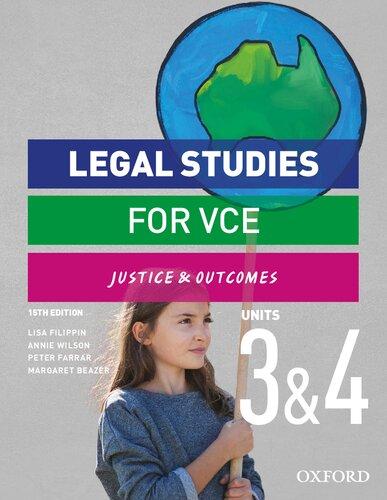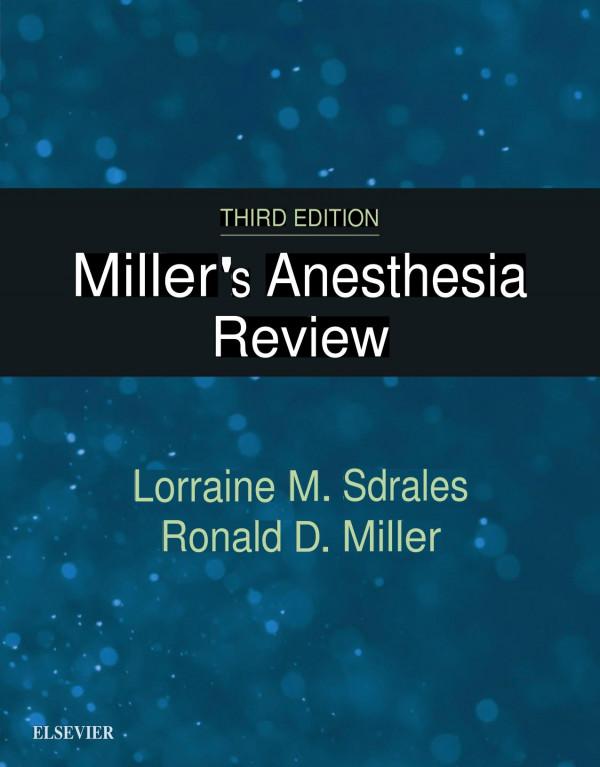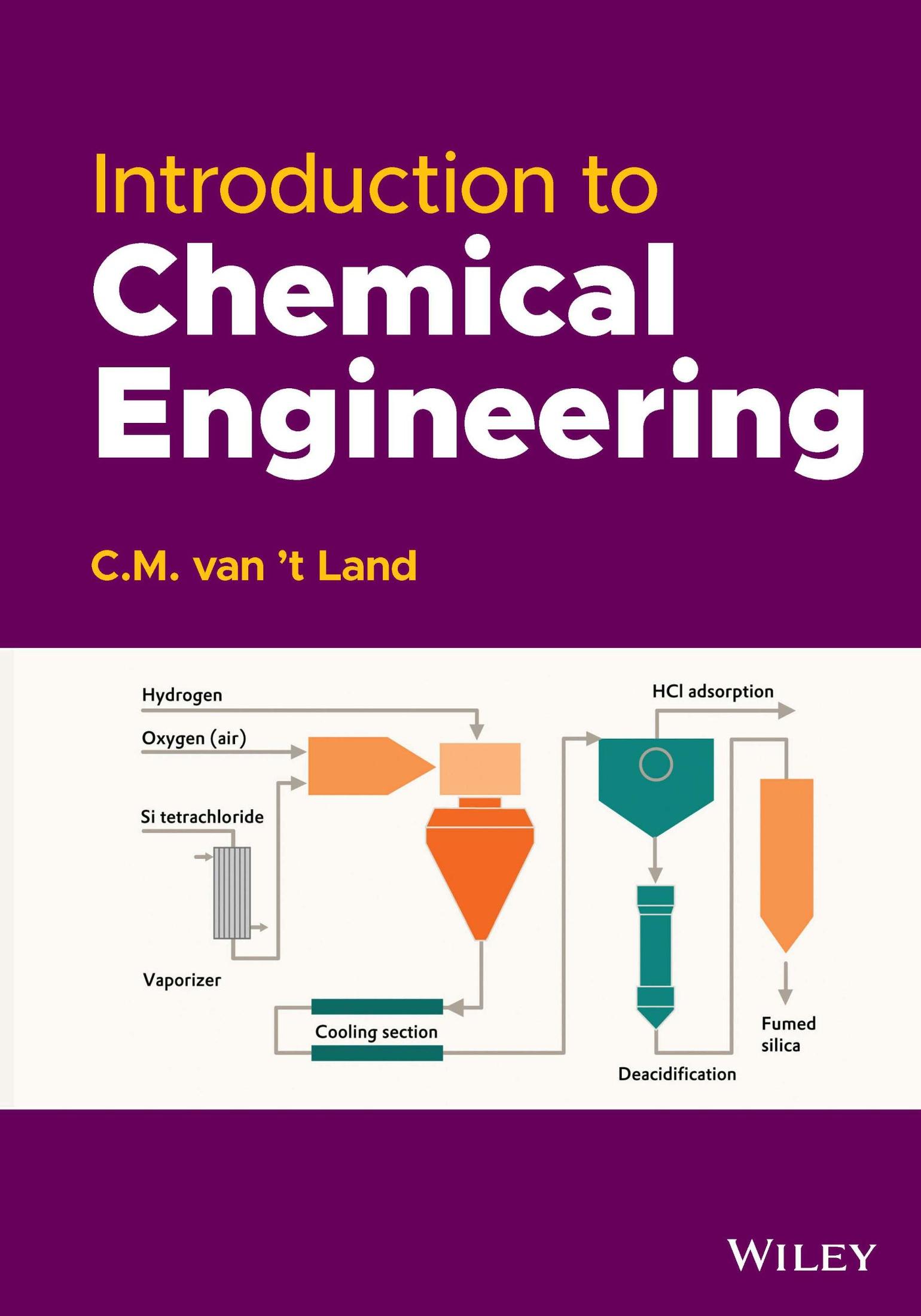IntroductiontoChemicalEngineering
C.M.van ’tLand Enschede,TheNetherlands
Copyright©2024byJohnWiley&Sons,Inc.Allrightsreserved.
PublishedbyJohnWiley&Sons,Inc.,Hoboken,NewJersey. PublishedsimultaneouslyinCanada.
Nopartofthispublicationmaybereproduced,storedinaretrievalsystem,ortransmittedinanyformorbyanymeans, electronic,mechanical,photocopying,recording,scanning,orotherwise,exceptaspermittedunderSection107or108 ofthe1976UnitedStatesCopyrightAct,withouteitherthepriorwrittenpermissionofthePublisher,orauthorization throughpaymentoftheappropriateper-copyfeetotheCopyrightClearanceCenter,Inc.,222RosewoodDrive, Danvers,MA01923,(978)750-8400,fax(978)750-4470,oronthewebatwww.copyright.com.Requeststothe PublisherforpermissionshouldbeaddressedtothePermissionsDepartment,JohnWiley&Sons,Inc.,111River Street,Hoboken,NJ07030,(201)748-6011,fax(201)748-6008,oronlineathttp://www.wiley.com/go/permission.
Trademarks:WileyandtheWileylogoaretrademarksorregisteredtrademarksofJohnWiley&Sons,Inc.and/orits affiliatesintheUnitedStatesandothercountriesandmaynotbeusedwithoutwrittenpermission.Allother trademarksarethepropertyoftheirrespectiveowners.JohnWiley&Sons,Inc.isnotassociatedwithanyproductor vendormentionedinthisbook.
LimitofLiability/DisclaimerofWarranty:Whilethepublisherandauthorhaveusedtheirbesteffortsinpreparingthis book,theymakenorepresentationsorwarrantieswithrespecttotheaccuracyorcompletenessofthecontentsofthis bookandspecificallydisclaimanyimpliedwarrantiesofmerchantabilityorfitnessforaparticularpurpose.No warrantymaybecreatedorextendedbysalesrepresentativesorwrittensalesmaterials.Theadviceandstrategies containedhereinmaynotbesuitableforyoursituation.Youshouldconsultwithaprofessionalwhereappropriate. Further,readersshouldbeawarethatwebsiteslistedinthisworkmayhavechangedordisappearedbetweenwhenthis workwaswrittenandwhenitisread.Neitherthepublishernorauthorsshallbeliableforanylossofprofitoranyother commercialdamages,includingbutnotlimitedtospecial,incidental,consequential,orotherdamages.
Forgeneralinformationonourotherproductsandservicesorfortechnicalsupport,pleasecontactourCustomerCare DepartmentwithintheUnitedStatesat(800)762-2974,outsidetheUnitedStatesat(317)572-3993orfax(317) 572-4002.
Wileyalsopublishesitsbooksinavarietyofelectronicformats.Somecontentthatappearsinprintmaynotbe availableinelectronicformats.FormoreinformationaboutWileyproducts,visitourwebsiteatwww.wiley.com.
LibraryofCongressCataloging-in-PublicationData
Names:C.M.van ’tLand,1937– author.
Title:Introductiontochemicalengineering/C.M.van ’tLand.
Description:1stedition.|Hoboken,NJ:Wiley,2024.|Includes bibliographicalreferencesandindex.
Identifiers:LCCN2021035195(print)|LCCN2021035196(ebook)|ISBN 9781119634089(hardback)|ISBN9781119634096(adobepdf)|ISBN 9781119634126(epub)
Subjects:LCSH:Chemicalengineering.
Classification:LCCTP155.L262024(print)|LCCTP155(ebook)|DDC 660–dc23
LCrecordavailableathttps://lccn.loc.gov/2021035195
LCebookrecordavailableathttps://lccn.loc.gov/2021035196
CoverDesign:Wiley
CoverImage:CourtesyofC.M.van ’tLand
Setin9.5/12.5ptSTIXTwoTextbyStraive,Pondicherry,India
Contents Preface xvii Prologue xix
PartITransportPhenomena 1
1MassBalances 3
1.1Introduction 3
1.2Theory 5
1.3AdditionalMaterial 9 Reference 10
2EnergyBalances 11
2.1Definitions 11
2.2TheGeneralEnergyBalance 12
2.3ApplicationsoftheGeneralEnergyBalance 13
2.3.1Pump 13
2.3.2AirOxidationofCumene 14
2.4TheMechanicalEnergyEquation 17
2.5ApplicationsoftheMechanicalEnergyBalance 18 References 22
3Viscosity 23
3.1Definition 23
3.2NewtonianFluids 25
3.3Non-NewtonianFluids 25
3.3.1TheViscosityisaFunctionoftheTemperatureandtheShearRate 25
3.3.2TheViscosityisaFunctionofTime 28
3.4Viscoelasticity 29
3.5ViscosityofNewtonianFluids 29
3.5.1Gases 29
3.5.2Liquids 30 References 32
10HeatTransferbyRadiation 87
10.1Introduction 87
10.2IR 87
10.3DielectricHeating 91
10.3.1GeneralAspects 91
10.3.2RFHeating 93
10.3.3MicrowaveHeating 94
References 97
11CaseStudiesHeatTransfer 99
11.1BulkMaterialsHeatExchanger 99
11.2HeatExchanger 100
11.3SurfaceTemperatureoftheSun 102
11.4GasIRTextileDrying 102
11.5HeatLossbyIRRadiation 103
11.6MicrowaveDryingofaPharmaceuticalProduct 103
References 104
12Steady-stateDiffusion 105
12.1IntroductionandDefinitionoftheDiffusionCoefficient 105
12.2TheDiffusionCoefficient 106
12.3Steady-stateDiffusion 107
References 112
13ConvectiveMassTransfer 113
13.1PartialandOverallMassTransferCoefficients 113
13.2MassTransferBetweenaFixedWallandaFlowingMedium 116
13.3SimultaneousHeatandMassTransferatConvectiveDrying 118 References 121
14CaseStudiesMassTransfer 123
14.1EquimolarDiffusion 123
14.2DiffusionthroughaStagnantBody 123
14.3SublimationofaNaphthaleneSphere 124
Reference 126
NotationI 127
GreekSymbols 131
PartIIMixingandStirring 135
15IntroductiontoMixingandStirrerTypes 137 References 142
16MixingTime 143
16.1Introduction 143
23.7HeatTransfer 199 References 199
24CaseStudiesMixingandStirring 201
24.1MixingTime ComparisonofStirrers 201
24.2MixingTime ScaleUpofProcess 202
24.3Suspensions 202
24.4AirOxidationOptimization 203
24.5Calculatingkl a 205
24.6HeatingTolueneinaStirredVessel 206
24.7OverallHeatTransferCoefficientofaJacketedReactor 207
24.8ScaleUpofMixing 209 References 210
NotationII 211
GreekSymbols 213
PartIIIChemicalReactors 215
25ChemicalReactionEngineering AnIntroduction 217
25.1FluidizedCatalyticCracking(FCC) 217
25.2KineticRateDataandTransportPhenomena 218
25.3ReactorTypes 219
25.4BatchReactionsVersusContinuousReactions 221
25.5AdiabaticTemperatureRise 222
25.6Recycle 223
25.7ProcessIntensification 224 References 226
26AFewTypicalChemicalReactors 227
26.1TheCarbo-V-ProcessofChoren 227
26.2CoalGasification 227
26.3Biofuels 229
26.4PyrogenicSilica 230
26.5Microwaves 231
27TheOrderofaReaction 233
27.1TheRateofaReaction 233
27.2IntroductoryRemarksontheOrderofaReaction 233
27.3First-OrderReaction 234
27.4Second-OrderReactions 236 References 239
28TheRateofChemicalReactionsasaFunctionofTemperature 241
28.1Arrhenius’ Law 241
28.2HowtoInfluenceChemicalReactionRates 242 Reference 243
Contents
29ChemicalReactionEngineering—AQuantitativeApproach 245
29.1Introduction 245
29.2BatchReactor 245
29.3PlugFlowReactor 247
29.4ContinuousStirredTankReactor(CSTR) 248
29.5ReactorChoice 251
29.6Staging 251
29.7ReversibleReactions 253
30APlantModification:FromBatchwisetoContinuousManufacture 257
30.1Introduction 257
30.2BatchwiseProduction 257
30.3ContinuousManufacture 257 Reference 258
31IntrinsicContinuousProcessSafeguarding 259
31.1Summary 259
31.2Introduction 259
31.3TheProductionofOrganicPeroxides 260
31.4IntrinsicallySafeProcesses 260
31.5IntrinsicProcessSafeguarding 261
31.6ExtrinsicProcessSafeguarding 261
31.7AdditionalRemarks 261
31.8PracticalApproach 262
31.9Examples 263 References 265
32ReactorChoiceandScaleUp 267
32.1Introduction 267
32.2ParallelReactions 267
32.3PhysicalEffects 269
33CaseStudiesChemicalReactionEngineering 271
33.1OrderofaReaction 271
33.2ChemicalReactionRateasaFunctionofTemperature 273
33.3ReactorSize 273
33.4ReversibleReactions 274
33.5CompetingReactions 276
33.6TheHydrolysisofAceticAcidAnhydride 276
33.7CumeneAirOxidation 277 References 278 NotationIII 279 GreekSymbols 280
PartIVDistillation 281
34ContinuousDistillation 283
34.1Introduction 283
34.2Vapor–LiquidEquilibrium 283
34.3TheFractionatingColumn 286
34.4TheNumberofTraysRequired 288
34.5TheImportanceoftheRefluxRatio 292
34.6ATypicalContinuousIndustrialDistillation 293 References 294
35DesignofContinuousDistillationColumns 295
35.1SieveTrayColumns 295
35.2PackedColumns 299 Note 302 References 302
36VariousTypesofDistillation 303
36.1BatchDistillation 303
36.2AzeotropicandExtractiveDistillation 309
36.3SteamDistillation 311 References 312
37CaseStudiesDistillation 313
37.1McCabe–ThieleDiagram 313
37.2DiameterofaSieveTrayColumnandSieveTrayPressureLoss 316
37.3TheDistillationofWine 317
37.4SteamDistillation 320 Reference 321
NotationIV 323 GreekSymbols 325
PartVLiquidExtraction 327
38LiquidExtraction – Part1 329
38.1Introduction 329
38.2TheDistributionCoefficient 333
38.3CalculationoftheNumberofTheoreticalStagesinExtractionOperations 334 References 336
39LiquidExtraction – Part2 337
39.1CalculationoftheNumberofTransferUnitsinExtractionOperations 337 Reference 342
40Flooding 343
40.1General 343 References 345
41TheTwoLiquidsExchangingaComponentArePartiallyMiscible 347
41.1TriangularCoordinates 347
41.2FormationofOnePairofPartiallyMiscibleLiquids 348
41.3ContinuousCountercurrentMultiple-contactExtraction 353 References 355
42CaseStudiesLiquidExtraction 357
42.1ASeriesofCentrifugalExtractors 357
42.2ExtractionbyMeansofAnIonicLiquid 359
42.3OverallTransferCoefficient/HeightofaTransferUnit 360
42.4CalculationoftheColumnHeight 362
42.5TwoPartiallyMiscibleLiquidsExchangeaComponent 363 References 365
NotationV 367
GreekSymbols 369
PartVIAbsorptionofGases 371
43AbsorptionofGases 373
43.1Introduction 373
43.2DeterminationoftheNumberofTheoreticalStagesatAbsorptionofGases 374
43.3EstimationoftheDiameterofanAbsorptionColumnforNaturalGas 377
43.4TheAbsorptionofCarbonDioxide 378
43.5DesignofAbsorptionColumns 379 References 381
NotationVI 383 GreekSymbols 384
PartVIIMembranes 385
44Membranes AnIntroduction 387
44.1General 387
44.2Membranes 387
44.3ThreePressure-DrivenMembraneSeparationProcessesforAqueousSystems 389
44.4AMembraneSeparationProcessforAqueousSolutionsWhichIsDrivenbyan ElectricalPotentialDifference 390
44.5GasSeparation 391
44.6Pervaporation 392
44.7MedicalApplications 392
44.8AdditionalRemarks 393 References 394
45Microfiltration 395
45.1Introduction 395
45.2MembraneTypes 396
45.3MembraneCharacterization 397
45.4FilterConstruction 397
45.5OperationalPractice 398 References 399
46Ultrafiltration 401
46.1Introduction 401
46.2MembraneCharacterization 401
46.3ConcentrationPolarizationandMembraneFouling 402
46.4MembraneCleaning 406
46.5UltrafiltrationMembraneSystems 407
46.6ContinuousSystems 408
46.7Applications 409 References 411
47ReverseOsmosis 413
47.1Osmosis 413
47.2ReverseOsmosis 414
47.3TheoreticalBackground 415
47.4ConcentrationPolarization 417
47.5MembraneSpecifications 417
47.6MembraneQualities 417
47.7ReverseOsmosisUnits 418
47.8MembraneFoulingControlandCleaning 419
47.9Applications 420
47.10NanofiltrationMembranes 421
47.11ConclusionsandFutureDirections 421 References 421
48Electrodialysis 423
48.1Introduction 423
48.2FunctioningofIon-ExchangeMembranes 424
48.3TypesofIonExchangeMembranes 424
48.4TransportinElectrodialysisMembranes 425
48.5PowerConsumption 427
48.6SystemDesign 427
48.7Applications 428 References 429
49GasSeparation 431
49.1Introduction 431
49.2TheoreticalBackground 431
49.3ProcessDesign 436
49.4Applications 437 References 441
55ContactDrying 493
55.1Introduction 493
55.2ScalingUpofaConicalVacuumDryer 493
55.3AnAdditionalRemarkConcerningVacuumDrying 497
55.4TestingaSmallPlateDryer 498
55.5TestingaContinuousPaddleDryer 500
55.6ScaleUpofaThin-FilmDryer 503 Reference 506
56CaseStudiesCrystallization,Liquid/SolidSeparation,andDrying 507
56.1Ultracentrifuges 507
56.2Le2/3 507
56.3ConvectiveDrying-1 508
56.4ConvectiveDrying-2 509
56.5AnalysisofaSpray-DryingOperation 509
56.6EstimationoftheSizeofaContactDryer 512 References 515
NotationVIII 517
GreekSymbols 519
PartIXGas/SolidSeparation 521
57Introduction 523
58Cyclones 525
58.1Introduction 525
58.2SizingandProcessData 525 References 527
59FabricFilters 529
59.1Introduction 529
59.2Fabrics 529
59.3BaghouseConstructionandOperation 531 Reference 532
60Scrubbers 533
60.1Introduction 533
60.2Packed-BedScrubbers 534
60.3VenturiScrubbers 535
60.4MechanicalScrubbers 536 References 537
61ElectrostaticPrecipitators 539
61.1Introduction 539
61.2PrincipleofOperation 540
Preface
AftergraduationasachemicalengineerattheUniversityofTwenteinTheNetherlandsin1971I workedinresearchforthemultinationalcompanyAkzoNobel.Myretirementstartedin2000.In 2005,IproposedtheDutchorganizationPAOTechniekenManagementtoorganizeaseminar “IntroductiontoChemicalEngineering”.Thegoalwastoenablechemistsintheprocessindustry toacquireknowledgeofchemicalengineering.TheseminarwasgivensuccessfullyinThe Netherlandsbetween2005and2015anditsscopewasgraduallyextended.Materialfromstandard textbookswascombinedwithmaterialobtainedwhileatwork.Theseminarappearedtobe attractivealsofor,e.g.,mechanicalengineersandphysicists.TheseminarwaswritteninEnglish asthatisthe “linguafranca” oftheprocessindustry.Then,in2015,theinterestdeclined.Itispossiblethatinternetinformationisthecause.IthenproposedJohnWiley&Sonstopublishabook containingthematerialoftheseminar.Anagreementwasmadeandthepresentbookistheresult. Iamgratefulforthepermissionsobtainedfortheincorporationofmaterialfromvarioussources. Thesourcesarementionedinthebook.Iwishtothankespeciallythefollowingpublishers:
DelftAcademicPress/VSSDatDelftinTheNetherlands, ElsevieratAmsterdaminTheNetherlands, McGraw-HillatNewYorkintheU.S.A., JohnWiley&SonsatHobokenintheU.S.A., TaylorandFrancisGroupatAbingdonintheU.K.,and WoltersKluweratAlphenaandenRijninTheNetherlands.
Iamgreatlyindebtedtomywife,Annechien,forherconstantencouragementandpatience.
C.M.van ’tLand
1.ATypicalChemicalProductionSystem
Introduction
Theproductionsystemforcrystallineethylenediaminetetra-aceticacid(EDTA)withinNouryon IndustrialChemicalswillbedescribed.Nouryonisamultinationalcompanymanufacturingchemicals.Thecompanyemploysatpresentapproximately10,000employeesandisactiveinmore than80countries.TheactivitiesofNouryonwerepartofthemultinationalcompanyAkzoNobel till2019.EDTAisachelate,itisalsocalledasequesteringagent.ThecommercialnameoftheproductisDissolvineZ.
Chelates
Theword “chela” meansclawinGreek.Chelateshavetheabilitytoseizemetalionsandcontrol them,makingitdifficultforadifferentsubstancetoliberatethem.EDTAandcompoundsderived fromEDTAarechelates.Forexample,thecalciumdisodiumsaltofEDTAisappliedtodeactivate undesirableheavymetalionsthatcatalyze(promote)thedegradationofvegetableoilsandfats.By preventingthisdegradation,whichmakesfoodandbeveragesrancid,foodqualityispreservedand shelflifeisincreased.TheapplicationofEDTAinboilers,heatexchangers,andotherwatercirculationsystemspresentinpower,brewing,sugar,anddairyindustriesisafurtherexample.Thecompoundformsstable,water-solublemetalcomplexeswithallpotentiallyharmfulmetalions, dissolvingexistingmetalcomplexesandpreventingnewonestoform.
Theothersideofthecoinisthatsequesteringagentscanalsobeappliedtodeliberatelyadministerametal.Forexample,aNouryonironchelatehasbeenapprovedbytheWorldHealthOrganizationandtheFoodandAgriculturalOrganizationtobeappliedasanironsupplementinfood. Theironchelateissolubleinwater.
TheChemistryoftheEDTA-Na4 Synthesis
ThetetrasodiumsaltofEDTAistheintermediateforthemanufactureofEDTA.
Thecompoundismadebythealkalinecyanomethylationofethylenediamine(EDA)bymeans ofsodiumcyanideandformaldehyde:
Thisisanoverallequation.Thealkalinecyanomethylationcomprisesinfactaseriesofconsecutivereactions.
Theprincipalby-productisNH3,ammonia,whichiscontinuouslyboiledoffduringthereaction. Thereactioniscarriedoutbatchwise.Thereactionisexothermic.Thereactionconditionsare 100–105 Candthepressureisatmospheric.ThepHofthereactionishigherthan12,somefree causticsodaisaddedtothereactor.Thereactionrateishigh,thereactionisbroughttocompletion inseconds.Thereactiondoesnotneedacatalyst.AnexcessofNaCNcausestheformationof sodiumformate.Anexcessofformaldehydecausestheformationofoligomericcompounds.With respecttoEDA,theyieldis95–100%.Forselectivityreasons,itisnotpossibletocarryoutthereactioncontinuously.
Theremovalofammoniaiskeyasammoniareactswithsodiumcyanide,formaldehyde,and watertothetrisodiumsaltofnitrilotri-aceticacid:
NTA-Na3: O
NaOCCH2 O NCH2 CONa
NaOCCH2 O
TheimpurityNTA-Na3 andotherimpurities(likeglycolicacidsalt)arenotdetrimentaltomost applicationsofchelatingagents.
TheIndustrialReactiontoProduceEDTA-Na4
SeeFigure1.First,thereactorwillbedescribed.Itstotalvolumeisapproximately25m3 . Thereactantsaremixedbymeansofaproprietarystirrer.Heatistransferredindirectlyto thereactorcontentsbymeansofacoilinthelowerpartofthereactor.Thecoilisheatedby meansofsteam.Thereactionisanexothermicone;however,extraheatisneededfortheevaporationofwaterandammonia.Therearebafflesinthelowerpartofthereactor,theirheight
equalstheheightofthecoil.Formaldehydeisdosedbymeansofaspargeraroundtheagitator. Formaldehydeisthemostcriticalcomponent.AnaqueoussolutionofsodiumcyanideandEDA aredosedbymeansofdip-pipes.Gaseousammoniaandwaterareremovedoverheadandare condensedinaseriesoftwosurfacecondensers.Inthefirstcondenser,wateriscondensed mainlywhereasNH 3 -25isobtainedinthesecondcondenser.Thesaturatedvaporpressureof NH 3 -25is1baraat25 C.
Second,themanufacturingprocedurewillbedescribed.AcertainamountofEDAisaddedtothe reactor.Smallamountsofwaterandcausticsoda(NaOH)arealsoaddedtoadjustthealkalinity. Next,thestirrerisactivatedandthereactorcontentsareheatedto100 C.Thedosingoftheaqueoussolutionsofsodiumcyanide,formaldehyde,andEDAisstartedandthereactionproceeds. Ammoniaandwaterareremovedoverhead.Thebatchtimeis4–5h.Eachbatchyields15tofa 45%byweightsolutionofthetetrasodiumsaltofEDTAinwaterand4tofa25%byweightsolution ofammoniainwater.Next,thereactorcontentsarepumpedtoasecondreactortobringthereactiontocompletionundermoderateboilingconditions.Bleachingthecontentsofthesecondreactor isthenextstep.TheintermediateistermedDissolvineE-45.Itcanbesoldassuch,itcanbespraydried,oritcanbeconvertedintotheacid.Theconversionintotheacidwillbedescribedinthenext section.
Theaqueoussolutionofsodiumcyanideishighlytoxictohumans.Contactwithanacidconverts sodiumcyanidetohydrogencyanidewhichisahazardousrespiratorypoison.Hydrogencyanide dissolvesinwaterandistransportedviathebloodstreamtotheindividualcellsofthebodywhereit blocksoxygenuptakebycombiningwiththeenzymeswhichcontrolcellularoxidation.Oxygen uptakeatthecellularlevelisblockedaslongasthecyanideispresent.Normalcellularoxygen uptakecanresumeifdeathofthecellshasnotalreadyoccurred.Thecyanidesareparticularlyhazardousbecauseoftheirlowthresholdtoxicitylevelcoupledwiththefactthattheyareodorless. Severaloperatorsaretrainedtobeabletogiveaninjectionwithanantidoteifneedbe.
E‐45 Steam
C.W.
Figure1 EDTA-Na4 reactor.
Prologue xxi
Vapors out
Figure3 Beltfilter. Source: CourtesyofOutotecOyj,Espoo,Finland.
Figure4 Thin-filmdryer. Source: CourtesyofBepexInternationalLCC,Minneapolis,U.S.A.

